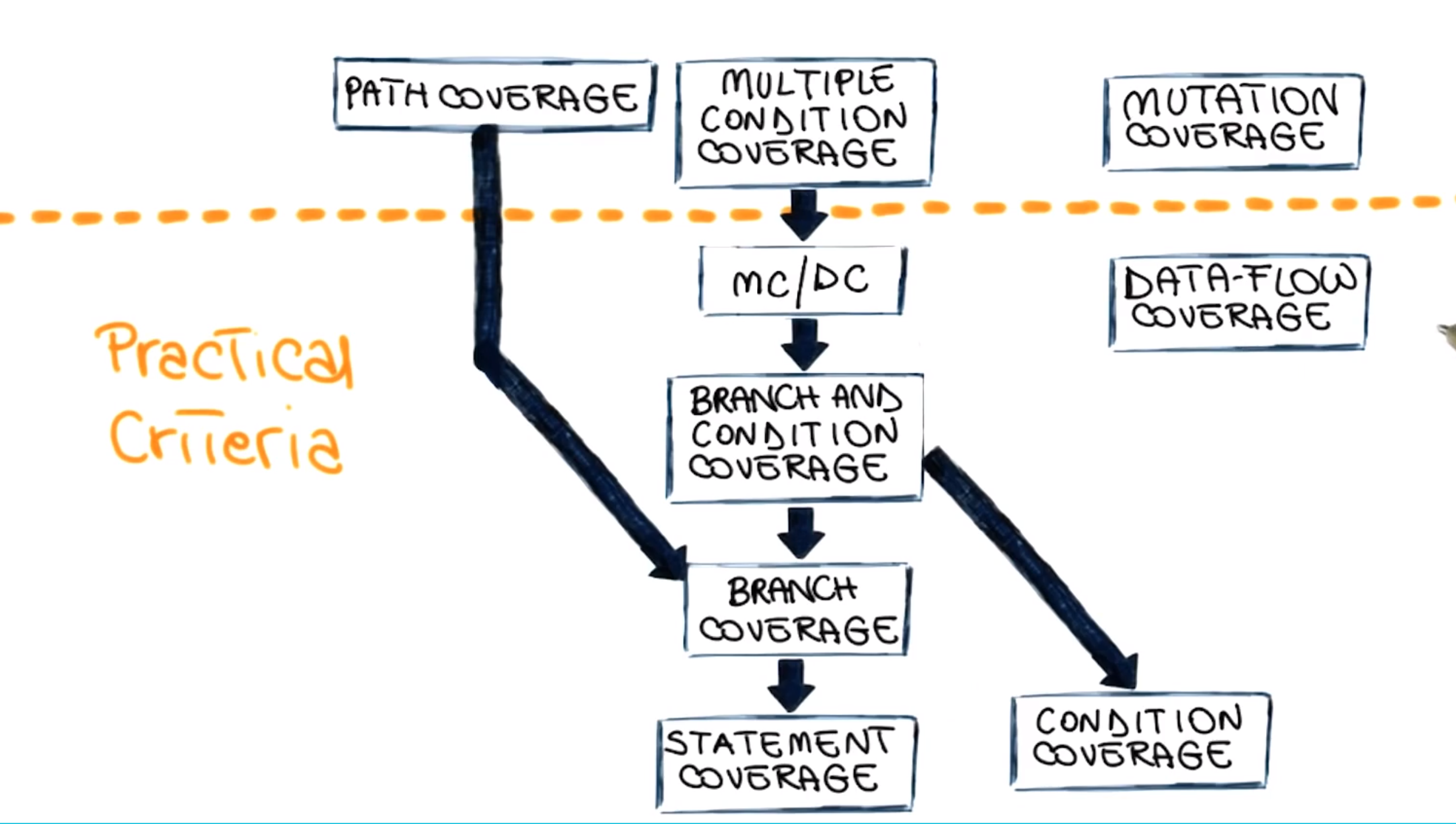Software Verification
Verification approach
- Testing
- Static verification
- Inspection/Review
- Formal proofs of correctness (state machine)
Testing Verifiation
Input Domain D -> Software -> Output Domain O Individual test sets.
Pro: No False positive Con: incomplete
Verification
all possible inputs (executions) for Input Domain D. Pro: Consider all program behaviors Con: False positives
Inspection(Reviews, walk-through)
Pro: systematic, thorough Con: informal, subjective
Formal proofs
Program implemented specifications. Pro: strong guarantees. Con: complex, expensive
Testing
Executing a program on a tiny sample of the input domain.
- Dynamic technique
- Optimistic approximation
Successful tests
Test granularity levels
- Unit tests: one module
- Integration testing: a subset of several modules
- System testing: the whole system.
System testing
- Acceptance testing: validation against customer requirements.
- Regression testing
Alpha and Beta testing
Users testing.
Black-Box testing / Functional testing
- Based on specification.
- Covered as much specified behavior
- Cannot reveal errors due to implementation details.
Advantages:
- Focus on the domain
- No need for the coe, early test design
- Catches logic defects
- Applicable at all granularity levels
A Systematic functional testing approach:
- Functional specification
- Identify independently testable features
- Relevant inputs
- Test cases specification
- Test cases
How to select test cases in the test domain?
- Random selection
- Partition of domains, e.g. x < 0, x = 0, x > 0
- Boundary values between domains.
Category partition method
- Identify independently testable features
- Identify categories/characteristics
- Partition categories into choices
- Identify constraints among choices
- Eliminate meaningless combinations
- Reduce the number of test cases
- Three types: property...if, error, single.
- Produce/evaluate test case specifications
- Generate test cases from test case specifications
Model based testing
- Finite state machine
- Decision tables
- flow graphs
- historical models
White-Box testing - Structured testing
- Based on the code.
- Cover as much coded behavior as possible.
- Cannot reveal errors due to missing paths.
Basic assumption Executing the faulty statement is a necessary condition for a fault.
Advantage
- Based on the code.
- Can be used to compare test suites
- Allows for covering the coded behavior.
Categories
- Control-flow based
- data-flow based
- fault based
Coverage Criteria
Defined in terms of test requirements from the code.
Result in test specifications, test cases.
Statement Coverage
Most used in the industry 80-90%
Number of executed Statements / total number of Statements.
Control flow graphs
Branch coverage
Number of executed branches / total number of branches
Condition coverage
Test requirements: individual conditions in the program Coverage measure: number of conditions that are both T and F / Total number of conditions.
Branch & Coverage(B&C) coverage
Branches and individual conditions
Modified condition/Decision coverage
Key idea: test important combinations of conditions and limited testing costs.
The FAA(Federal Aviation Administration) requires all software tested for MC|DC.
extend branch and condition coverage with the requirement that each condition should affect the decision outcome independently.
Other criteria
- Path coverage
- Data flow coverage
- Mutation coverage
